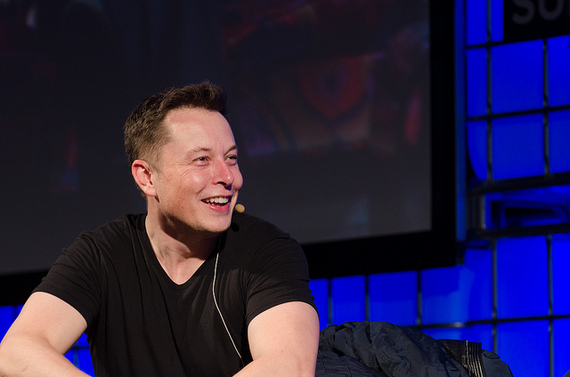Tesla Motors is on the cutting edge of automotive technology. While their luxury appeal remains out of reach for most consumers, their contributions to the industry will permeate for decades to come. The Tesla Model X is arguably their best vehicle created to date, notable in part for it's fuel economy and advanced design.
There's no doubting that the Model X is innovative, but perhaps it will be remembered for the way it helped usher in Elon Musk's vision of the future of transportation. In June we were all treated to the stunning revelation that Musk intended to acquire SolarCity, a solar power company wherein he serves as chairman. Musk recused himself of board and shareholder voting beforehand. The plan to combine Tesla and SolarCity will cost an estimated $2.86 billion, and it is my stance that it is merely a taste of what's yet to come.
My hunch was confirmed when Elon Musk announced solar panel roof tiles coupled with a battery unit that stores excess energy collected for later use in the home. Musk introduced the audience to his new solar panel roof shingles that are both aesthetically pleasing and effective. Would an efficient small scale version of this technology be effective when applied to a vehicle, or would the energy collected be too little?
The Model X is an innovative automobile already, but imagine what could be possible with the acquisition of this new technology. An electric vehicle that can perpetually recharge itself would significantly extend the maximum travel range. This kind of technology on cars is years away, as it's difficult to collect solar power in large amounts with small panels. In the meantime, owners of both Tesla's vehicles and home roof tiles could use the stored power at home to charge their vehicles, at the very least charging their car at home for 'free'.
If a more efficient method of collection could be devised, it would cut down on how frequently drivers must stop to recharge at a Supercharger station, thus saving Tesla money on the free lifetime recharges they provide to their customers. Elon Musk's rise has been predicated upon radical ideas that he's repeatedly proven he can deliver. Time and again he's tried to empower customers by cutting dependence on fossil fuels, and now by ending reliance on a power grid. In 2015 he did the same thing in a head-to-head battle against New Jersey when they tried to prevent Tesla from selling cars directly to customers instead of through dealerships that raise prices to keep their profits high. New Jersey's decision to ban was overturned and Tesla's customers benefited. Having the independence to power your own home (maybe someday your car) is empowering indeed.
In any case, larger panels can understandably collect more solar power. This power could be funneled into a home charging station for your automobile, thus insuring that charging your car's batteries is free at home and at a Tesla station. That sounds like an attractive possibility to me. It's all part of Tesla's mission to create environmentally friendly alternatives that perform better than their gasoline guzzling competitors. Tesla is the industry leader in electric cars for a reason. How long will it take until they lead in renewable energy as well?

